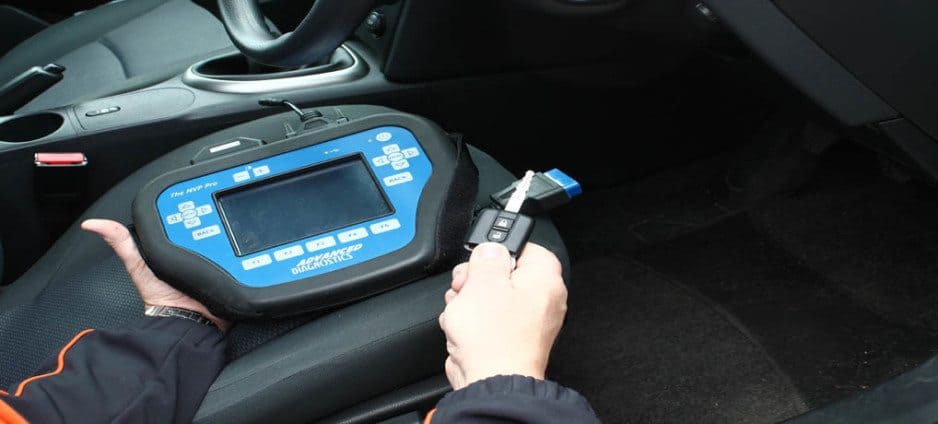Car door locks are essential for the security and safety of your vehicle. They help protect your belongings and ensure that you can access your car when needed.
However, various issues can affect the proper functioning of car door locks. This article will discuss common car door lock issues and provide guidance on how to handle them effectively.
Types of Car Door Lock Issues
There are several common car door lock issues that you might encounter:
- Jammed Lock: Dirt, debris, and other particles can accumulate inside the lock, causing it to jam and preventing the key from turning.
- Broken Key: Keys can break inside the lock due to excessive force or wear and tear, making it difficult to unlock the car door.
- Frozen Lock: Cold temperatures can cause the lock mechanism to freeze, preventing the key from turning.
- Electronic Lock Malfunction: Electronic car door locks can experience issues such as dead batteries or faulty wiring, leading to a malfunction.
- Worn Out Lock: Over time, the lock components can wear out, leading to a failure in the lock mechanism.
Diagnosing Car Door Lock Issues
Before attempting to fix any car door lock issue, it’s crucial to diagnose the problem correctly. Here are some steps to help you identify the issue:
- Visual Inspection: Check the lock for any visible signs of damage, wear, or debris.
- Listening for Sounds: Listen for any unusual sounds when attempting to use the lock, such as grinding or clicking noises.
- Testing the Lock Mechanism: Try locking and unlocking the door with both the key and the remote control to determine if the issue is with the lock or the remote.
Tools and Materials for Fixing Car Door Lock Issues
To address car door lock issues, you will need a few essential tools and materials:
- Basic Toolkit: A set of screwdrivers, pliers, and a small flashlight will help you perform various tasks when working on the lock.
- Lock Lubricant: A lubricant specifically designed for locks can help resolve issues related to jamming or sticking.
- Key Extractor: A key extractor tool is necessary for removing broken keys from the lock.
- De-icing Agent: A de-icing agent can help thaw frozen locks and restore their functionality.
- Replacement Parts: In some cases, you may need to replace worn-out or damaged components, such as the lock cylinder or the entire lock mechanism.
Fixing Jammed Car Door Locks
When dealing with a jammed lock, follow these steps:
- Identifying the Cause: Determine whether the lock is jammed due to debris, corrosion, or worn-out parts.
- Using a Lock Lubricant: Apply a lock lubricant to the key and insert it into the lock, gently turning it back and forth to help distribute the lubricant and loosen the jam.
- Removing Debris: Use a small tool, such as a thin wire or a pick, to remove any visible debris from the lock.
- Replacing Worn Out Parts: If the lock is still jammed after lubrication and debris removal, you may need to replace worn-out components or the entire lock mechanism.
Dealing with Broken Keys
If a key breaks inside the lock, follow these steps:
- Using a Key Extractor: Insert the key extractor tool into the lock, positioning it next to the broken key. Gently twist and pull the extractor until the broken key comes out.
- Replacing the Key: Obtain a new key from the dealership or a locksmith, using the broken key as a reference.
- Repairing or Replacing the Lock Cylinder: If the broken key has caused damage to the lock cylinder, you may need to repair or replace it.
Addressing Frozen Car Door Locks
To fix a frozen lock, follow these steps:
- Using a De-icing Agent: Spray a de-icing agent into the lock to help dissolve the ice.
- Applying Heat: Use a hairdryer or a heat gun to warm the lock, being careful not to damage the surrounding paint or plastic components.
- Preventative Measures: To prevent future freezing, lubricate the lock regularly and consider using a lock cover during cold weather.
Troubleshooting Electronic Car Door Lock Issues
For electronic lock malfunctions, follow these steps:
- Checking the Battery: Ensure that the car’s battery and the remote control battery are both in good condition.
- Inspecting Wiring: Check the wiring connecting the lock mechanism to the car’s electrical system for any damage or disconnections.
- Resetting the System: Consult your car’s owner’s manual for instructions on resetting the electronic lock system.
- Seeking Professional Help: If the issue persists after trying these steps, consult a professional mechanic or auto locksmith.
Handling Worn Out Car Door Locks
When dealing with worn-out locks, follow these steps:
- Replacing the Lock Cylinder: Remove the old lock cylinder and replace it with a new one, following the manufacturer’s instructions.
- Installing a New Lock Mechanism: In cases where the entire lock mechanism is worn out, you may need to replace it with a new one.
- Maintaining the Lock: To prevent future wear and tear, regularly lubricate the lock and ensure that it is functioning correctly.
Conclusion
Addressing car door lock issues is essential for the security and safety of your vehicle. By following the guidance provided in this article, you can handle most common lock issues using DIY solutions.
However, if you encounter a problem that you cannot resolve on your own, don’t hesitate to seek professional help from a mechanic or a locksmith.

